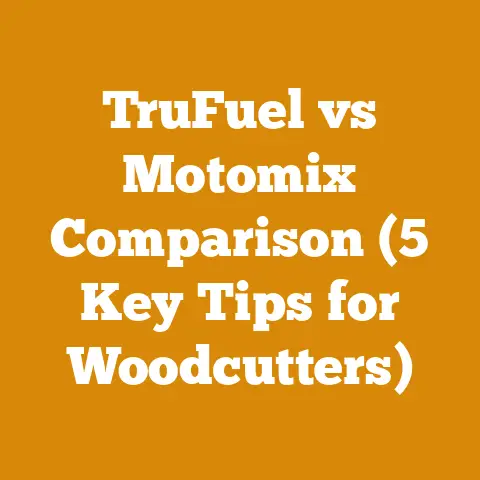Black Cherry Tree Problems (5 Expert Signs You Must Know)
Isn’t it ironic how we admire the majestic black cherry, its dark fruit and glossy leaves, while simultaneously dreading the troubles it can bring?
It’s a bit like loving a classic car – beautiful, but a potential money pit.
Today, we’re diving deep into the world of black cherry tree problems, not just identifying them, but understanding their cost implications and how to budget for potential interventions.
As someone who has spent countless hours felling, milling, and even heating my home with black cherry, I’ve learned firsthand that a little foresight can save you a whole lot of heartache (and money).
Black Cherry Tree Problems (5 Expert Signs You Must Know)
Black cherry trees (Prunus serotina) are valuable assets in many landscapes, prized for their timber, wildlife value, and aesthetic appeal.
However, these trees are susceptible to various problems that can impact their health, structural integrity, and ultimately, your wallet.
Recognizing these issues early is crucial for effective management and minimizing potential losses.
1. Leaf Spot Diseases: The Speckled Specter
The Problem: Leaf spot diseases, caused by various fungi (like Coccomyces lutescens), are common on black cherry.
They manifest as small, circular spots on the leaves, often with a purple or brown halo.
Severe infections can lead to premature leaf drop, weakening the tree and affecting its growth.
Why it Matters (Cost Implications):
- Reduced Timber Value: Defoliation stresses the tree, slowing growth and potentially affecting timber quality.
A study by the USDA Forest Service found that repeated defoliation can reduce radial growth in black cherry by up to 20%.
That translates directly to smaller, less valuable logs down the line. - Increased Landscaping Costs: Premature leaf drop creates extra cleanup work, especially in residential settings.
I remember one year, my neighbor had to pay a landscaping crew an extra $300 just to deal with the early leaf fall from his infected cherry tree. - Treatment Costs: Fungicides can be used to manage leaf spot, but applications are often expensive, especially for large trees.
A single fungicide treatment for a mature black cherry can easily cost between $100 and $500, depending on the product and applicator.
Cost Breakdown:
Calculating Lost Timber Value: This is tricky, but let’s consider a hypothetical scenario.
A healthy black cherry might add 2 inches of diameter growth per decade.
If defoliation reduces this to 1.6 inches, you’re losing 20% of potential growth.
If that tree, once mature, would have been worth $500 in timber, you’ve potentially lost $100.
This is a simplified example, of course, but illustrates the principle.
My Experience: I once ignored a minor leaf spot issue on a young black cherry sapling.
Within a few years, the infection had spread, and the tree was noticeably stunted.
I ended up spending more on fungicide treatments than I would have if I had addressed the problem early.
Lesson learned: early intervention saves money in the long run.
2. Black Knot Disease: The Ominous Growths
The Problem: Black knot, caused by the fungus Apiosporina morbosa, is a highly visible and disfiguring disease.
It manifests as hard, black, elongated swellings on branches and twigs.
These knots disrupt the tree’s vascular system, weakening the affected areas and eventually killing the branches.
Why it Matters (Cost Implications):
- Structural Weakness: Black knot weakens branches, increasing the risk of breakage, especially during storms.
This can lead to property damage and potential injury. - Aesthetic Damage: The unsightly knots significantly detract from the tree’s aesthetic value, reducing property values.
- Removal Costs: Severely infected trees may require complete removal, which can be a significant expense.
Tree removal costs vary widely depending on the size and location of the tree, but can easily range from $500 to $2,000 or more. - Spread to Other Trees: Black knot can spread to other susceptible trees in the vicinity, increasing the overall cost of management.
Cost Breakdown:
Data Point: According to a study by the International Society of Arboriculture, the average cost of tree removal in urban areas is around $750.
However, this can increase significantly for large or hazardous trees.
My Story: I once had a beautiful black cherry in my backyard that became heavily infected with black knot.
I tried pruning the infected branches, but the disease kept spreading.
Eventually, I had to make the difficult decision to remove the tree.
The removal cost me $1,200, but I knew it was necessary to prevent further damage and potential injury.
It was a costly lesson, but it taught me the importance of early detection and proactive management.
3. Eastern Tent Caterpillar Infestation: The Voracious Eaters
The Problem: Eastern tent caterpillars are a common springtime pest that can defoliate black cherry trees.
These caterpillars build silken tents in the crotches of branches and emerge to feed on the leaves.
While a single infestation is usually not fatal, repeated defoliation can weaken the tree.
Why it Matters (Cost Implications):
- Reduced Growth: Defoliation reduces the tree’s ability to photosynthesize, slowing growth and potentially affecting timber quality.
- Increased Susceptibility to Other Pests and Diseases: Stressed trees are more vulnerable to other problems.
- Treatment Costs: Insecticides can be used to control tent caterpillars, but applications can be expensive, especially for large trees.
- Aesthetic Impact: Unsightly tents and defoliated branches can detract from the tree’s aesthetic value.
Cost Breakdown:
Cost Optimization Tip: For small infestations, manual removal of the tents is often the most cost-effective solution.
Simply prune out the affected branches and dispose of them properly.
This can save you the expense of insecticide treatments.
Calculating Lost Timber Value: Similar to leaf spot, repeated defoliation from tent caterpillars can impact growth rates.
A moderate infestation might reduce annual growth by 5-10%.
Over several years, this can accumulate to a significant loss in timber volume and value.
My Experience: I’ve found that early detection is key to managing tent caterpillars.
I make it a habit to inspect my black cherry trees in the spring for signs of tent formation.
If I catch them early, I can usually remove the tents by hand before they cause significant damage.
This simple practice has saved me a lot of money on insecticide treatments.
4. Borers: The Silent Destroyers
The Problem: Various borers, including the cherry bark borer and the ambrosia beetle, can attack black cherry trees.
These insects tunnel into the wood, disrupting the tree’s vascular system and weakening its structure.
Borer infestations are often difficult to detect until significant damage has occurred.
Why it Matters (Cost Implications):
- Structural Weakness: Borer tunnels weaken the wood, increasing the risk of branch breakage and tree failure.
- Tree Death: Severe borer infestations can kill the tree.
- Removal Costs: Dead or severely damaged trees often require removal.
- Reduced Timber Value: Borer damage can significantly reduce the value of the timber.
- Treatment Costs: Preventative insecticide treatments can be used, but they are often expensive and not always effective.
Cost Breakdown:
Industry Benchmark: According to the Arbor Day Foundation, the average cost of treating a tree for borers is around $250 per tree.
However, this can vary depending on the size of the tree and the severity of the infestation.
Data Point: A study by Purdue University found that borer infestations can reduce the structural integrity of trees by up to 50%.
This significantly increases the risk of tree failure during storms.
My Insight: Preventing borer infestations is often more cost-effective than treating them.
Maintaining tree health through proper watering, fertilization, and pruning can help make trees less susceptible to borer attacks.
I also avoid wounding my black cherry trees, as this can attract borers.
My Experience: I once had a black cherry tree that was slowly declining.
I couldn’t figure out what was wrong until I noticed small holes in the bark.
It turned out the tree was infested with borers.
By the time I discovered the problem, the damage was too extensive, and I had to remove the tree.
The experience taught me the importance of regular tree inspections and preventative measures.
5. Root Rot: The Hidden Threat
The Problem: Root rot is a fungal disease that affects the roots of black cherry trees.
It is often caused by poor drainage, compacted soil, or overwatering.
Root rot can damage the roots, impairing their ability to absorb water and nutrients.
Why it Matters (Cost Implications):
- Tree Decline: Root rot causes the tree to decline slowly, exhibiting symptoms such as yellowing leaves, stunted growth, and branch dieback.
- Structural Instability: As the roots decay, the tree becomes structurally unstable and more likely to fall over.
- Removal Costs: Severely affected trees often require removal.
- Soil Remediation: Addressing the underlying drainage or soil issues can be expensive.
- Replacement Costs: Replacing the tree can add to the overall expense.
Cost Breakdown:
Practical Calculation: Improving soil drainage might involve installing a French drain.
The cost of a French drain varies depending on its length and depth, but you can estimate around $10-$30 per linear foot for materials and labor.
Make sure your black cherry trees are planted in well-drained soil and avoid overwatering.
Amending the soil with organic matter can improve drainage and aeration.
My Experience: I once planted a black cherry tree in an area with poor drainage.
Within a few years, the tree started to decline.
I eventually realized that root rot was the problem.
I tried to improve the drainage, but the damage was already done.
The tree eventually died, and I had to remove it.
I learned the hard way the importance of proper site selection and soil preparation.
Budgeting for Black Cherry Tree Care: A Proactive Approach
Now that we’ve explored the common problems affecting black cherry trees and their associated costs, let’s talk about budgeting.
A proactive approach to tree care can save you money in the long run by preventing problems from escalating.
1. Regular Inspections: Your First Line of Defense
The most cost-effective way to manage black cherry tree problems is to catch them early.
Conduct regular inspections of your trees, looking for signs of disease, pests, or structural issues.
Pay attention to the leaves, branches, trunk, and roots.
Cost: The cost of regular inspections is minimal.
You can do them yourself for free, or hire a certified arborist for a professional assessment.
A professional arborist inspection typically costs between $75 and $200 per tree.
2. Preventative Measures: Investing in Long-Term Health
Preventative measures can significantly reduce the risk of black cherry tree problems. These include:
- Proper Planting: Choose a suitable location with well-drained soil and adequate sunlight.
- Watering: Water trees deeply and infrequently, especially during dry periods.
Avoid overwatering, which can lead to root rot. - Fertilizing: Fertilize trees as needed based on soil tests.
- Pruning: Prune trees regularly to remove dead, damaged, or diseased branches.
- Mulching: Apply a layer of mulch around the base of the tree to conserve moisture, suppress weeds, and protect the roots.
Cost: The cost of preventative measures varies depending on the specific actions taken.
Mulch typically costs between $30 and $50 per cubic yard.
Fertilizer costs vary depending on the type and quantity needed.
Pruning costs can range from $75 to $300 per tree, depending on the size and complexity of the job.
3. Emergency Fund: Preparing for the Unexpected
Even with the best preventative measures, unexpected problems can arise.
It’s wise to set aside an emergency fund to cover the costs of tree removal, major repairs, or other unforeseen expenses.
Cost: The size of your emergency fund will depend on the size and number of black cherry trees you have, as well as your risk tolerance.
A good starting point is to set aside at least $500 to $1,000 per tree.
4. Cost-Benefit Analysis: Making Informed Decisions
When faced with a black cherry tree problem, it’s important to conduct a cost-benefit analysis before making any decisions.
Consider the cost of treatment versus the potential benefits, such as preserving the tree, preventing further damage, or maintaining property value.
Example: Let’s say you have a black cherry tree with a minor borer infestation.
The cost of preventative spraying is $200.
The cost of removing the tree if the infestation is left untreated is $1,000.
In this case, the cost-benefit analysis clearly favors preventative spraying.
5. DIY vs. Professional Services: Weighing Your Options
Many black cherry tree problems can be addressed with DIY solutions, such as manual removal of tent caterpillars or pruning of infected branches.
However, some problems require the expertise of a professional arborist.
Consider your skills, experience, and available time when deciding whether to tackle a problem yourself or hire a professional.
Cost: DIY solutions are typically less expensive than professional services, but they require more time and effort.
Professional services offer expertise and convenience, but they come at a higher cost.
Understanding Timber Value and Firewood Potential
Black cherry is a valuable hardwood, prized for its beautiful grain and rich color.
If you have mature black cherry trees on your property, you may be able to harvest them for timber or firewood.
Understanding the potential value of your trees can help you make informed decisions about their management.
Timber Value: A Long-Term Investment
Black cherry timber is used for a variety of purposes, including furniture, cabinetry, flooring, and veneer.
The value of black cherry timber depends on several factors, including:
- Tree Size: Larger trees generally yield more valuable timber.
- Tree Quality: Trees with straight trunks, few knots, and minimal defects are more valuable.
- Market Demand: Timber prices fluctuate based on market demand.
- Location: Timber prices vary depending on the region.
Data Point: According to the USDA Forest Service, the average stumpage price (the price paid to the landowner for standing timber) for black cherry in the Eastern United States is around $500 per thousand board feet (MBF).
However, this can vary significantly depending on the factors mentioned above.
Calculating Timber Volume: To estimate the timber volume of a black cherry tree, you can use the Doyle Log Scale, a common method for estimating board feet.
The formula is:
Board Feet = (Small End Diameter in Inches – 4)2 x Log Length in Feet / 16
Example: A black cherry log with a small end diameter of 16 inches and a length of 12 feet would have an estimated volume of:
(16 – 4)2 x 12 / 16 = 108 board feet
At a stumpage price of $500 per MBF, this log would be worth approximately $54.
Firewood Potential: A Sustainable Resource
Black cherry makes excellent firewood, producing a good amount of heat and burning cleanly.
If you have black cherry trees that need to be removed, you can use the wood for firewood instead of sending it to the landfill.
Data Point: The average price of firewood in the United States is around $250 per cord.
However, this can vary depending on the region, the type of wood, and the season.
Calculating Firewood Volume: A cord of firewood is a stack of wood that measures 4 feet high, 4 feet wide, and 8 feet long, for a total volume of 128 cubic feet.
My Experience: I’ve found that black cherry firewood seasons well and burns hot.
It’s a great way to utilize trees that need to be removed for safety or health reasons.
Plus, it saves me money on heating costs.
Cost Optimization Tips for Wood Processing and Firewood Preparation
Whether you’re harvesting timber or preparing firewood, there are several ways to optimize your costs and maximize your profits.
1. Negotiate Prices: Don’t Be Afraid to Haggle
When buying equipment, supplies, or services, don’t be afraid to negotiate prices.
Shop around, compare quotes, and see if you can get a better deal.
2. Buy in Bulk: Save Money on Supplies
Buying supplies in bulk can often save you money.
This is especially true for items like chainsaw oil, firewood splitting wedges, and safety gear.
3. Maintain Your Equipment: Prevent Costly Repairs
Regularly maintain your equipment to prevent costly repairs.
Keep your chainsaw sharp, your wood splitter lubricated, and your safety gear in good condition.
4. Season Your Firewood Properly: Maximize Heat Output
Season your firewood properly to maximize its heat output.
Allow the wood to dry for at least six months before burning it.
This will reduce the moisture content and increase the amount of heat it produces.
5. Utilize Local Resources: Support Your Community
Support your local community by utilizing local resources.
Buy timber from local sawmills, purchase firewood from local suppliers, and hire local contractors.
Actionable Takeaways and Next Steps
Black cherry trees are valuable assets, but they require proper care and management.
By understanding the common problems that affect these trees, budgeting for potential interventions, and optimizing your wood processing and firewood preparation costs, you can protect your investment and enjoy the many benefits that black cherry trees have to offer.
Here are some actionable takeaways:
- Conduct regular inspections of your black cherry trees.
- Implement preventative measures to reduce the risk of problems.
- Set aside an emergency fund to cover unexpected expenses.
- Conduct a cost-benefit analysis before making any decisions.
- Maintain your equipment and season your firewood properly.
- Utilize local resources and support your community.
Next steps:
- Schedule a professional arborist inspection for your black cherry trees.
- Develop a tree care plan that includes preventative measures and a budget for potential interventions.
- Research local timber markets and firewood prices to determine the potential value of your trees.
- Gather quotes from local contractors for tree removal, pruning, and other services.
- Start preparing for the upcoming wood processing or firewood season.
By taking these steps, you can ensure that your black cherry trees remain healthy, productive, and valuable for many years to come.
And remember, a little bit of foresight and planning can save you a whole lot of money in the long run.
Now, go forth and conquer those black cherry tree challenges!






